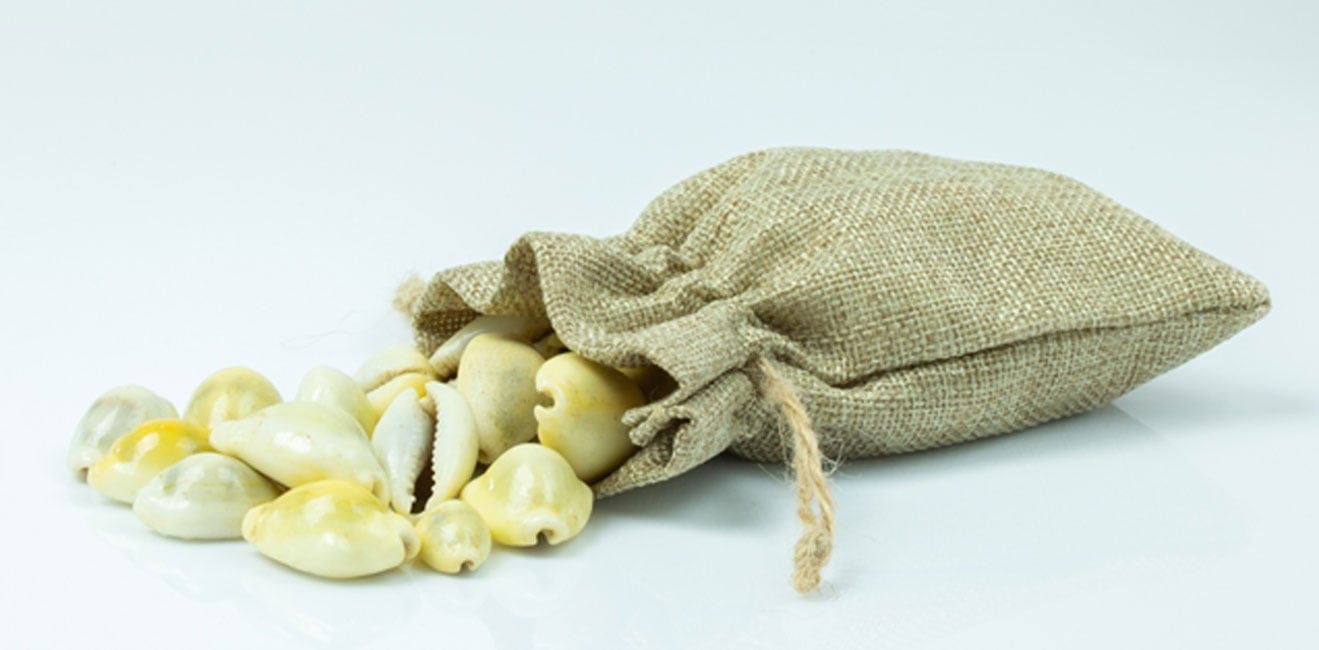What is Money?
Before there was money, we all operated on a barter system. People took things of value and traded them — bread for hunting tools, housing for companionship. A lot of bartering still happens, actually. In fact, it’s still the primary way that value gets exchanged in many places.
Money is a relatively recent invention. At some point, we realized that if we had a common currency, we could create more efficient markets for goods and services. This efficiency drove the price of things down overall, because people value things differently. So really, the price of a good or service is just its market value at any given time.
In the very beginning, money started out as seashells. People used them — since they were relatively rare and found on beaches — to exchange value. If you went out and collected seashells, you essentially had money. People would drill holes in them to mark units of currency.
Eventually, when we discovered precious metals, those became the standard. They were valuable because they took effort to extract from the earth. Over time, gold became the dominant form of money — it was rare and durable, and most valuable currencies were backed by it. That’s how the U.S. dollar worked for a long time.
Then, in the 1970s, we moved to fractional reserve banking. This introduced the idea of a central money printer — the U.S. Federal Reserve — which printed most of the world’s money. And eventually, most of the world agreed to operate on that monetary system.
Cryptocurrencies, interestingly, are just another form of money — except they're tracked digitally. One of Bitcoin’s major innovations is that it uses a decentralized ledger that everyone can access, rather than relying on a single central authority like a bank. This helps prevent fraud, waste, and abuse. But that's a whole topic on its own.
I first learned about money when I joined as an intern at Coinbase. There was a manager there, Justin O'Brien, who gave an excellent presentation on the history of money and how it works.
What I’ve realized since then is that money and value are two very different things. In fact, most of the value exchanged in the world isn't tied to money at all. You don’t really want to hold a lot of cash — you want to own things. And what people value varies from person to person.
This insight felt important. Because in movies and media, business deals are always framed as being about money — “a $100 million deal,” or “a cash acquisition.” But in reality, it’s people trading things they value differently. You might trade stock in your company to acquire another company in an all-stock deal. And the other company might be perfectly happy with that, because they believe in your stock.
The same thing happens outside of business — in friendships, relationships, communities — anywhere there's an exchange of value. And not all value is monetary. Some of it is lessons, advice, support — stuff that’s technically “free,” like a lot of what I put on the internet — but still deeply valuable.
So money? Money is actually a very small fraction of how value moves around the world. It’s almost more like a drug than a measure of actual worth.
That’s why I find it funny when we talk about billionaires being “worth” $10 billion. That’s not really true. They just own something that other people currently value at $10 billion. The idea that they could actually turn that into cash is kind of silly. They just own something valuable — like equity in a company — and that’s what people are assigning value to.
So when we talk about money, yeah, there’s a whole world of innovation around financial systems, banking, crypto, and so on. But there’s a much broader value exchange system operating outside of traditional finance. It has more to do with time, behavior, and what people care about — behavioral economics, not just economic economics — and that’s what really makes the world go around.
When you're evaluating a system like the U.S. economy, you're not just looking at how money moves. You're looking at how value gets exchanged — and that’s a much bigger picture.


